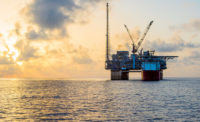On Dec. 1, BP plc announced that, after reducing the costs of its proposed Mad Dog 2 offshore platform by more than 60%, to $9 billion, it will move ahead with its first Gulf of Mexico offshore structure since the 2010 Gulf oil spill.
The floating platform, almost 200 miles south of New Orleans, is expected to come on line in 2021 and produce up to 140,000 barrels of oil per day from 14 subsea wells.
BP, which has a 60.5% working interest in the field, scrapped its initial plans for Mad Dog 2 in 2013, after estimated costs reached $22 billion.
The company reconfigured the design and worked with suppliers to bring the cost down. The design of the floating production platform will be based on the company’s Atlantis platform, also in the Gulf, said Jason Ryan, a BP spokesman. BP also is taking advantage of lower costs for drill ships, materials and yard availability, he said.
The company is eyeing Far East fabrication options and taking advantage of lessons learned “on standardizing wellheads, equipment, drilling, completion—that sort of thing,” said Bob Dudley, BP Group chief executive, in a July earnings conference call.
Samsung has been selected to perform some early work on the project, while KBR did front-end engineering and design for the platform, Ryan said.
Other contracts won’t be let until BP’s project partners—BHP Billiton, with a 23.9% interest, and Union Oil Co. of California, with a 15.6% interest—make their final investment decisions.
Billions of dollars of offshore oil and gas work has been canceled or deferred since the price of oil slumped. But oil companies are unwilling to give up on the expensive offshore environment because, unlike onshore wells, deepwater investments can produce oil and natural gas for decades.
The first Mad Dog platform, in 4,500 ft of water, came on line in 2005 and can produce 80,000 barrels of oil per day.



Post a comment to this article
Report Abusive Comment